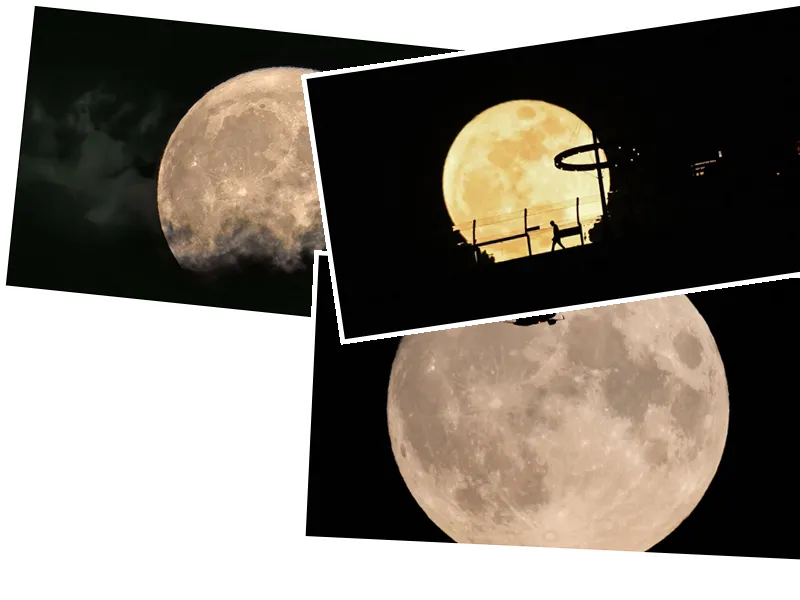Today, August 19, 2024, sky enthusiasts are treated to a celestial spectacle as the first supermoon of the year coincides with a blue full moon. This rare event is not just a visual delight but also an opportunity to explore the fascinating definitions and characteristics of supermoons and blue moons. According to NASA, the term 'supermoon' was introduced by astrologer Richard Nolle in 1979, describing a full moon that occurs when the moon is within 90% of its closest approach to Earth, known as perigee. However, today's full moon misses this mark by 196 kilometers, meaning it is not a true supermoon despite being labeled as such.
The blue moon, on the other hand, is a term that denotes the second full moon within a single month, a phenomenon that occurs approximately every two and a half years. Despite its name, a blue moon does not actually appear blue; the term is derived from the expression 'once in a blue moon,' indicating its rarity. This year, the blue moon is particularly special as it falls on the same day as the supermoon, creating a unique opportunity for stargazers to appreciate the beauty of the night sky.
Visibility for the supermoon and blue moon will vary across Germany, with optimal viewing expected between 8:30 p.m. and 9:15 p.m. local time. Unfortunately, southern Bavaria may experience cloud cover, obscuring the view. However, the moon will still be visible on August 20, albeit not in its full glory. For those who miss this event, the next supermoon will occur on September 18, 2024, which will also meet the criteria for a true supermoon.
In addition to enjoying the super blue moon, astronomers encourage sky watchers to also look for Jupiter and Mars, which are expected to be visible in close proximity during this celestial event. The allure of the supermoon, with its increased brightness and size, serves as a reminder of the beauty of our universe and the wonders that lie beyond our planet.
- Supermoons are not only visually stunning but also influence natural phenomena on Earth. Their proximity can lead to higher tides, known as 'king tides,' which can impact coastal areas. Astronomers note that while the size difference may be subtle to the naked eye, the brightness of a supermoon can be significantly enhanced, making it a perfect excuse to step outside and appreciate the night sky.
- The upcoming months promise more celestial events, including a partial lunar eclipse on September 18, 2024, coinciding with another supermoon. October 17, 2024, will feature the largest full moon of the year, as it will be about 100 kilometers closer to Earth than the August moon. These events provide ample opportunities for astronomy enthusiasts and casual observers alike to engage with the cosmos.






